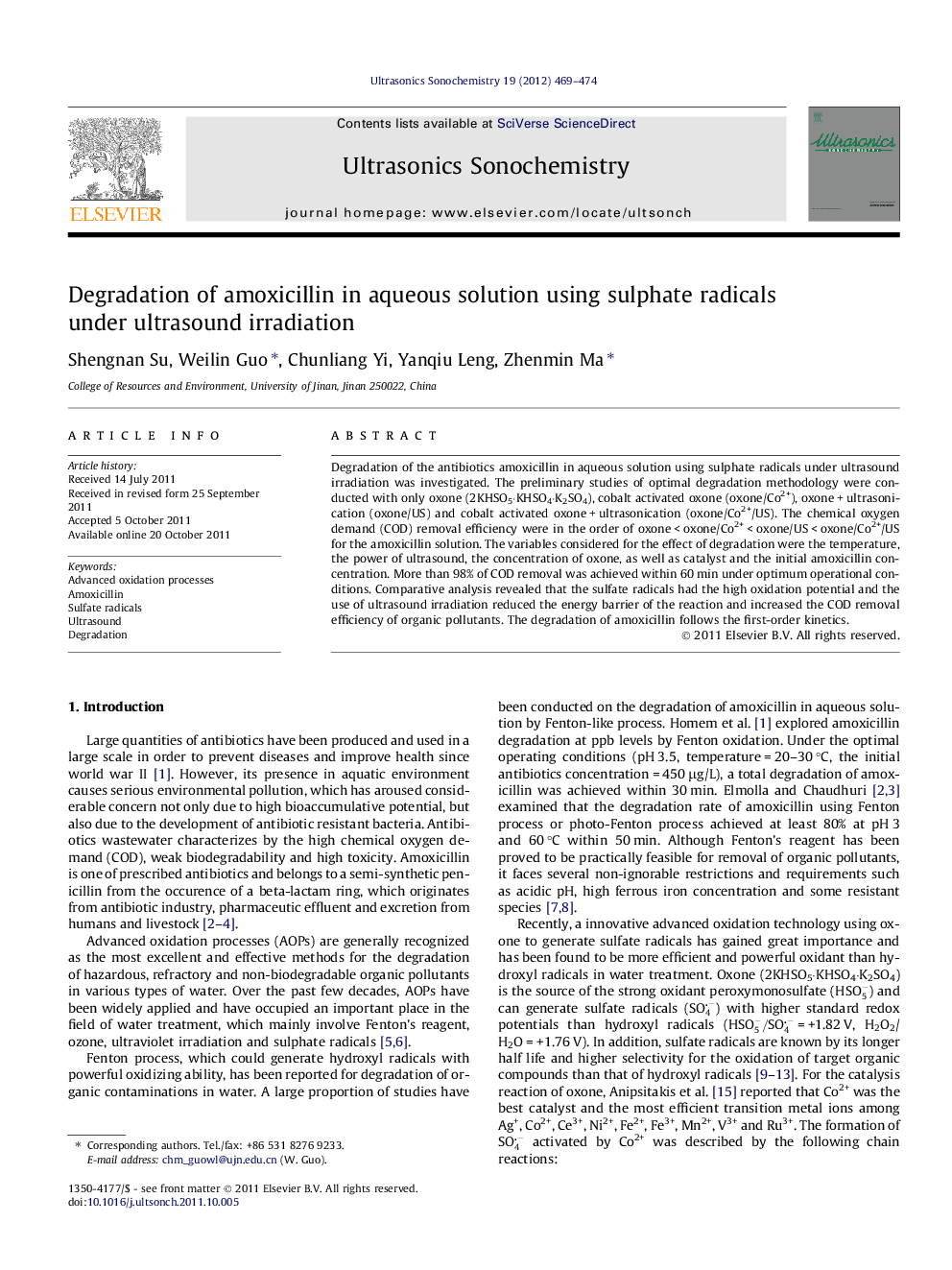| Article ID | Journal | Published Year | Pages | File Type |
|---|---|---|---|---|
| 1265386 | Ultrasonics Sonochemistry | 2012 | 6 Pages |
Degradation of the antibiotics amoxicillin in aqueous solution using sulphate radicals under ultrasound irradiation was investigated. The preliminary studies of optimal degradation methodology were conducted with only oxone (2KHSO5·KHSO4·K2SO4), cobalt activated oxone (oxone/Co2+), oxone + ultrasonication (oxone/US) and cobalt activated oxone + ultrasonication (oxone/Co2+/US). The chemical oxygen demand (COD) removal efficiency were in the order of oxone < oxone/Co2+ < oxone/US < oxone/Co2+/US for the amoxicillin solution. The variables considered for the effect of degradation were the temperature, the power of ultrasound, the concentration of oxone, as well as catalyst and the initial amoxicillin concentration. More than 98% of COD removal was achieved within 60 min under optimum operational conditions. Comparative analysis revealed that the sulfate radicals had the high oxidation potential and the use of ultrasound irradiation reduced the energy barrier of the reaction and increased the COD removal efficiency of organic pollutants. The degradation of amoxicillin follows the first-order kinetics.
► Degradation of amoxicillin using sulphate radicals under ultrasound irradiation. ► Effect of operating parameters on the destruction of amoxicillin was examined. ► Synergistic effect of ultrasound on amoxicillin degradation with sulfate radical.
